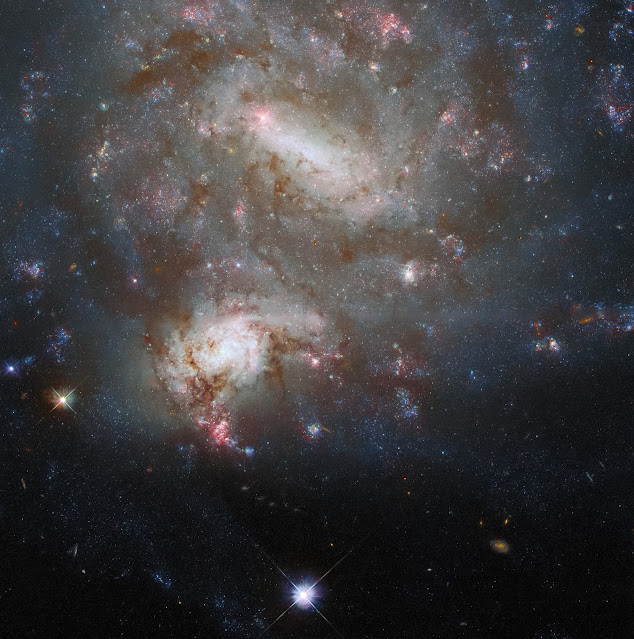A Not-So-Close Galactic Encounter | Hubble
Chance galactic alignments such as this provide astronomers with the opportunity to delve into the distribution of dust in these galaxies. Galactic dust adds to the beauty of astronomical images—it can be seen in this image as the dark tendrils threading through both NGC 4496A and NGC 4496B—but it also complicates astronomers’ observations. Dust absorbs starlight, making stars seem dimmer and shifting their light towards longer wavelengths, a process that astronomers refer to as “reddening” (not the same thing as redshift). By carefully measuring how starlight from background galaxies is affected by dust in intervening galaxies, astronomers can map out where the dust is in the foreground galaxy’s spiral arms. The resulting “dust maps” help astronomers calibrate measurements of everything from cosmological distances to the types of stars populating galaxies.
Credit:
ESA/Hubble & NASA, T. Boeker, B. Holwerda, Dark Energy Survey, DOE, FNAL/DECam, CTIO/NOIRLab/NSF/AURA, SDSS
Acknowledgement: R. Colombari
Release Date: February 28, 2022
#NASA #Hubble #Astronomy #Space #Science #Galaxy #Galaxies #NGC4496A #NGC4496B #Virgo #Constellation #Stars #Cosmos #Universe #Telescope #ESA #Goddard #GSFC #STScI #STEM #Education

No comments:
Post a Comment